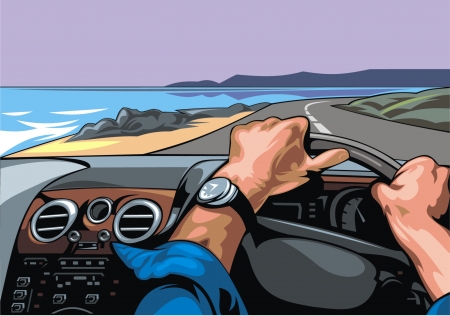Introduction to UK Driving Licence Age Requirements
The journey towards becoming a licensed driver in the United Kingdom is one marked by tradition, regulation, and a profound respect for public safety. The age requirements for learner, full, and special category driving licences form the bedrock of Britain’s approach to road governance—a legacy shaped by centuries of evolving laws and societal expectations. These standards are not arbitrary; they represent carefully considered milestones that balance youthful enthusiasm with the maturity needed for responsible motoring. Historically, as motor vehicles gained prominence in British society during the early 20th century, Parliament introduced age thresholds to safeguard both new drivers and the wider community. Over time, these regulations have been refined to reflect technological advances, road safety statistics, and cultural attitudes towards personal responsibility. Today, the UKs age-based licensing system stands as a testament to the nation’s commitment to nurturing confident, capable drivers while preserving the cherished values of order and fairness on its roads.
2. Learner Driving Licences: Rules and Minimum Age
In the United Kingdom, obtaining a provisional driving licence marks a significant milestone in a young person’s life, representing both newfound independence and responsibility. The minimum age for applying for a provisional licence is typically 17 years old for most vehicles, including cars and motorcycles. However, there are notable exceptions and cultural nuances to consider.
Minimum Age Requirements for Provisional Licences
| Vehicle Type | Minimum Age | Notes |
|---|---|---|
| Car (Category B) | 17 | 16 if receiving the higher rate of the mobility component of Disability Living Allowance (DLA) |
| Moped (Category AM) | 16 | |
| Motorcycle (Categories A1, A2, A) | 17-24* | *Varies by category and engine size |
| Lorry/Bus (Categories C, D) | 18 | With certain training or qualifications; otherwise age 21+ |
Cultural Significance of Learning to Drive in the UK
The journey towards earning a driving licence is deeply woven into British culture. For many teenagers, passing the theory test and stepping behind the wheel under the watchful eye of an instructor is almost a rite of passage—an emblem of adulthood and self-sufficiency. It also reflects a broader societal value placed on personal mobility, particularly in rural areas where public transport options may be limited. Families often celebrate this achievement as it not only grants freedom but also opens doors to work, travel, and social opportunities. The process instils a sense of discipline and community responsibility, echoing Britain’s longstanding appreciation for rules, orderliness, and respect for tradition.

3. Full UK Driving Licence: Age Criteria and Pathway
Securing a full UK driving licence is a significant milestone, deeply woven into British cultural life—symbolising both independence and responsibility. For most Britons, the journey begins at 17, the minimum age to apply for a full car (category B) driving licence, provided you’ve already held a provisional licence. Motorcycle enthusiasts face slightly different age thresholds: you may ride a light motorcycle at 17, but progressive access to larger bikes comes in stages, starting from age 19 (A2 licence) and culminating with unrestricted motorcycles at age 24 (full category A).
The process is structured with classic British rigour. After mastering your skills as a learner, you must pass both the theory test—covering the Highway Code and hazard perception—and the practical driving test. These examinations uphold longstanding motoring traditions; the British take pride in their measured approach to road safety and driver competence.
For cars, passing these tests at 17 unlocks the freedom of solo motoring across the UK’s iconic roads—from winding country lanes to bustling city streets. For motorcycles, each category’s minimum age reflects a carefully considered pathway that balances youthful enthusiasm with maturity and experience.
This staged approach not only ensures safer roads but also instils a sense of accomplishment in new drivers, echoing the time-honoured values of patience and perseverance so characteristic of British society.
4. Special Category Licences: Lorries, Buses, and More
The United Kingdom’s transport sector is the lifeblood of its economy and communities, keeping goods, people, and services in motion from the highlands of Scotland to the bustling streets of London. For those looking beyond standard cars—towards lorries, buses, or specialist vehicles—distinct age requirements apply, reflecting both public safety and the professional responsibility these roles demand.
Age Thresholds for Specialist Vehicle Licences
Driving larger vehicles or carrying passengers for hire requires more than just skill; it calls for maturity and a sense of duty. The table below outlines the key age requirements for various special category licences:
| Licence Category | Minimum Age | Notes |
|---|---|---|
| Lorries (Category C / C+E) | 18 | Completion of Driver Certificate of Professional Competence (CPC) required for professional drivers. |
| Buses & Coaches (Category D / D+E) | 18 | CPC required if driving professionally; some exceptions allow 21 as minimum age depending on vehicle use. |
| Taxis & Private Hire Vehicles | Vary by Local Authority (usually 21) | Must also hold a full car licence and meet local council requirements. |
| Mopeds (Category AM) | 16 | – |
| Minibuses (Category D1) | 21* | *Can be lower (18) with CPC for professionals. |
The Role of Age in British Industry and Community Impact
The UK’s age requirements are not arbitrary; they reflect a balance between opportunity and safeguarding. In industries where lorry drivers ensure supermarket shelves are stocked or bus drivers ferry students and workers across towns, experience and reliability are paramount. Younger drivers can enter these vital professions with appropriate training, but only once they reach an age where responsibility aligns with the trust placed upon them by employers and the public.
Nurturing Future Professionals
By upholding these standards, Britain not only maintains its commitment to road safety but also invests in the next generation of professional drivers. Whether supporting rural communities through local bus routes or fuelling commerce via haulage networks, those who earn their special category licences join a proud tradition—one that keeps the nation moving forward, responsibly and reliably.
5. Exceptions and Unique Circumstances
The United Kingdom’s approach to driving licence age requirements is not only shaped by tradition and public safety but also by its commitment to inclusivity and social equity. While general rules set minimum ages for obtaining learner and full licences, there are notable exceptions and unique circumstances that make provisions for individuals whose needs fall outside the norm—particularly those with disabilities or those engaged in certain professions.
Age Exemptions for Drivers with Disabilities
Reflecting the British value of equal opportunity, special adjustments exist for drivers with disabilities. For instance, individuals receiving the enhanced rate of the mobility component of Personal Independence Payment (PIP) may apply for a provisional driving licence at age 16—one year earlier than the standard minimum for most motorists. This concession acknowledges the vital role that personal mobility plays in fostering independence and participation in everyday life.
Professional and Vocational Adjustments
Certain occupations necessitate distinct considerations regarding age limits. Those wishing to drive large goods vehicles (LGVs) or passenger carrying vehicles (PCVs), such as lorry or bus drivers, typically face higher minimum age requirements—usually 18 or 21, depending on the vehicle type and training undertaken. However, accelerated pathways may be available for those enrolled in approved training schemes or apprenticeships, recognising the importance of supporting young professionals entering essential sectors of the British economy.
Inclusivity at the Heart of Policy
These tailored exceptions underscore the UK’s dedication to crafting transport policies that are both pragmatic and inclusive. By accommodating unique life circumstances, whether through early access for disabled individuals or vocational flexibility for key workers, Britain reinforces its ethos: that roads—and opportunities—should be open to all who are ready and responsible, regardless of their starting point.
6. Cultural Significance and Brand Heritage of British Motoring
The age requirements for learner, full, and special category UK driving licences are more than mere legislative details—they are deeply interwoven with the heritage of British motoring culture and the legacy of iconic national brands. The minimum age for a provisional licence, set at 17, has long been a rite of passage for young Britons, symbolising newfound independence and responsibility. This coming-of-age moment is often celebrated within families and communities, reflecting a collective recognition of both personal maturity and social trust.
Motoring in Britain is not just about transportation; it is a reflection of British identity, craftsmanship, and innovation. Legendary marques such as Rolls-Royce, Bentley, Aston Martin, and MINI have all contributed to the UK’s reputation for engineering excellence and refined style. These brands, steeped in history, have shaped not only global perceptions of British motoring but also domestic attitudes towards driving as a cherished skill and privilege.
The tiered licensing system aligns with this ethos of respect, tradition, and progression. By requiring learners to reach certain milestones before gaining full or specialist driving privileges, the UK reinforces a culture where safety, competence, and pride in one’s ability behind the wheel are paramount. This approach mirrors the meticulous standards upheld by British automotive manufacturers—every step on the journey to becoming a fully licensed driver is akin to the careful assembly of an iconic motorcar: deliberate, considered, and rooted in tradition.
The Role of Motoring Clubs and Institutions
Throughout history, motoring clubs such as The Royal Automobile Club (RAC) and The Automobile Association (AA) have played significant roles in shaping public attitudes toward driving standards. These institutions champion not only road safety but also the celebration of motoring as part of Britain’s cultural tapestry. Their advocacy has reinforced the importance of responsible licensing ages, ensuring that each generation approaches driving with due reverence.
Motoring as a Symbol of Freedom
For many in the UK, acquiring a driving licence—especially at the traditional age—is emblematic of freedom and opportunity. It unlocks access to Britain’s picturesque countryside, bustling cities, and historic towns. This sense of liberation is mirrored in classic British road trips along scenic routes such as the North Coast 500 or through the Lake District, journeys that are often initiated as soon as one becomes eligible to drive.
A Continuing Legacy
Ultimately, age requirements for UK driving licences do more than regulate—they preserve a uniquely British narrative where tradition meets modernity on every stretch of tarmac. They honour both the individual’s development and the collective story told by generations of drivers and legendary brands alike. In this way, the regulations serve as silent stewards of a national passion for motoring—one that balances progress with profound respect for heritage.


